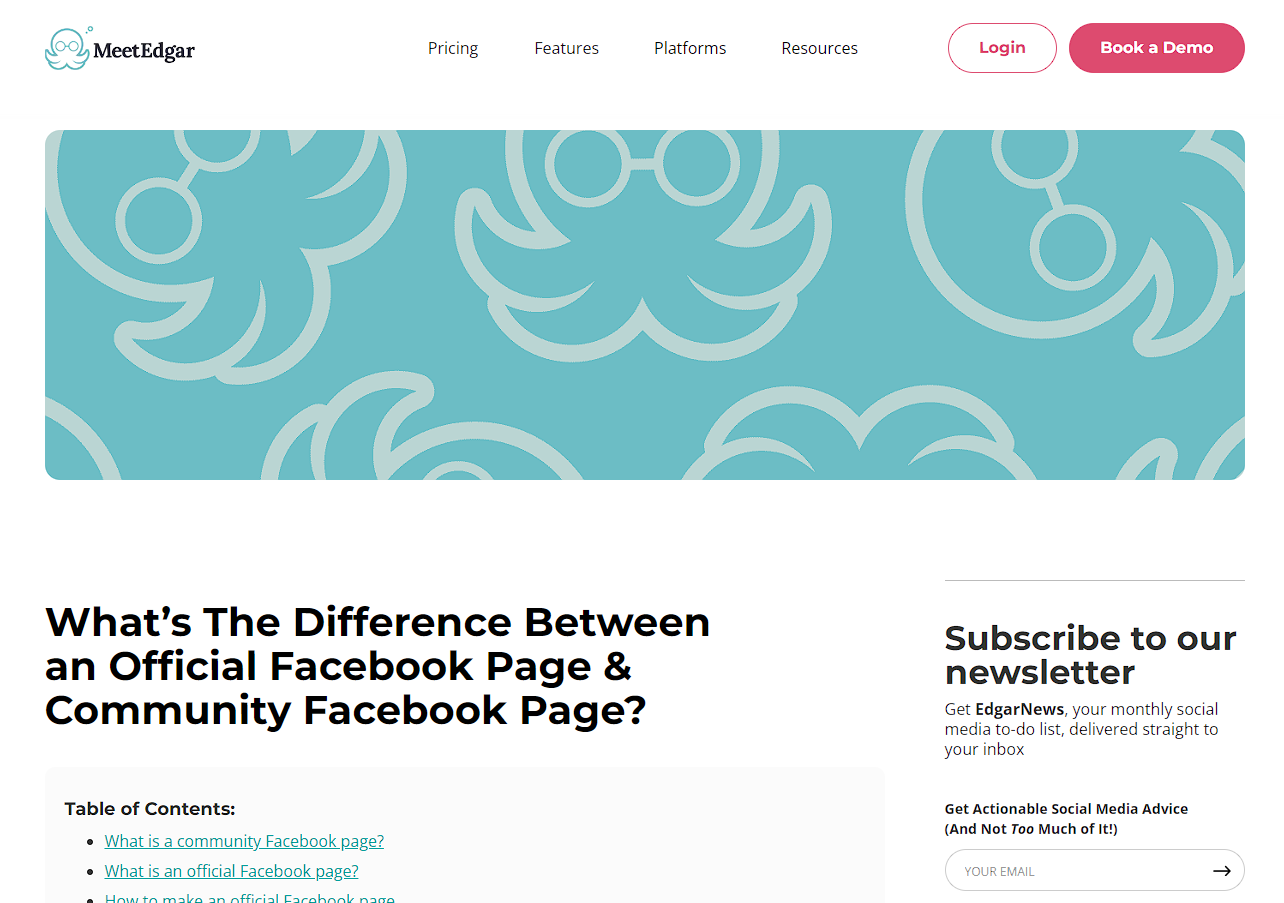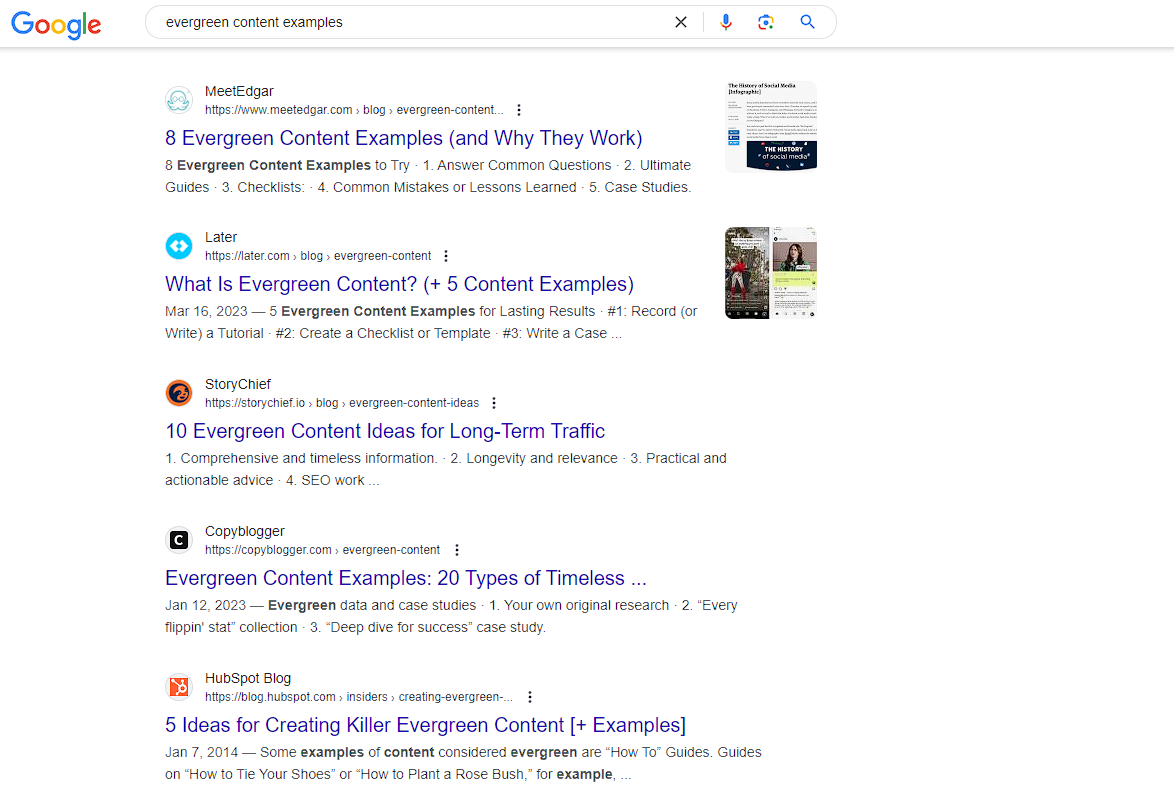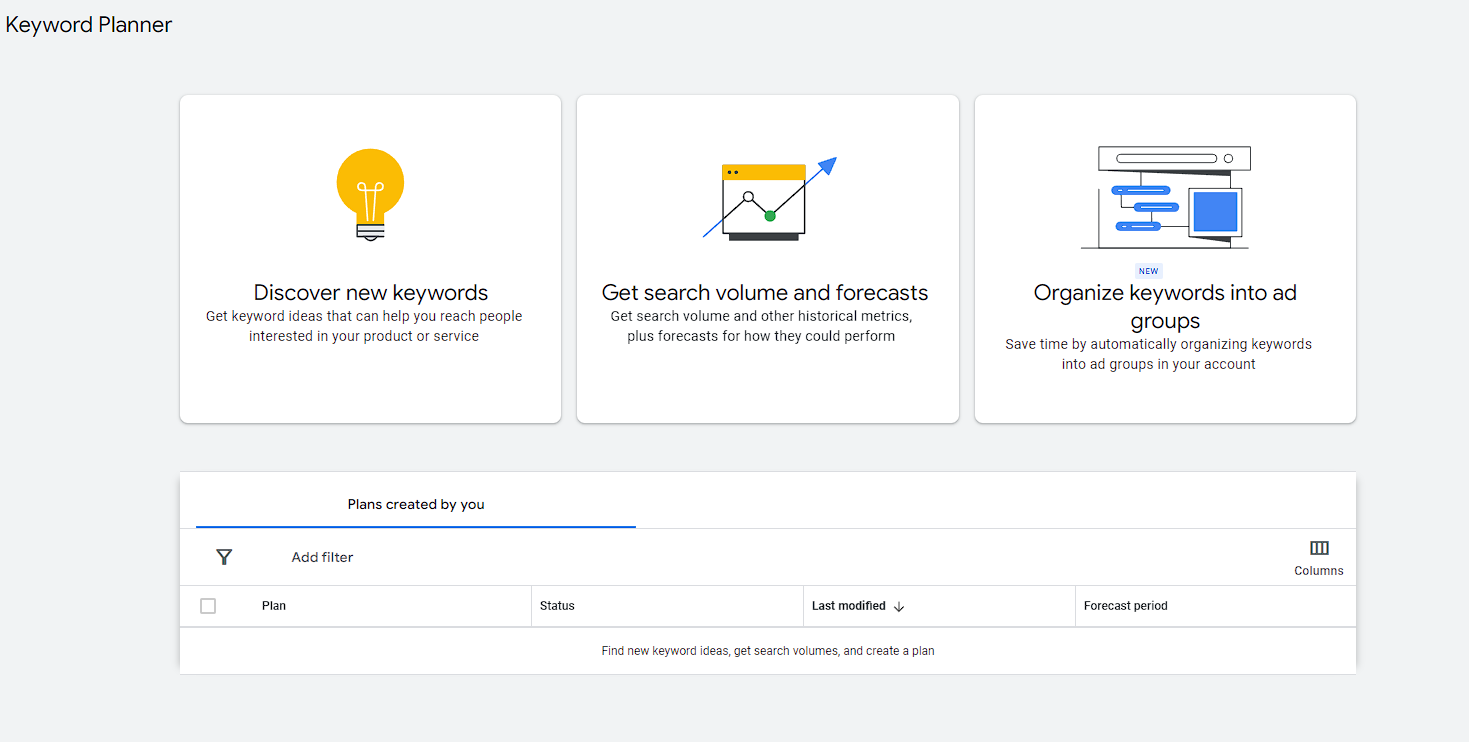Table of Contents:
A Guide to Evergreen Content for Entrepreneurs

Table of Contents:
Do you ever feel like you’re a hamster on a wheel when it comes to creating content? Like no matter how much you create, you can’t stop? Whether it’s social media updates, blog posts, emails or podcast episodes, content needs to be consistent and that means you might be creating a lot of it. This can be exhausting.
So we’re going to introduce you to the magic of evergreen content. If you use content to promote your business, then you need evergreen content.
Now, before you roll your eyes at the thought of creating even more content, let us show you the beauty of evergreen content.
What is evergreen content?
Evergreen content or evergreen articles is content that is continually relevant and stays fresh for your readers… you guessed it, just like an evergreen tree!
We also have a complete guide about Evergreen content, but in short words is it something that is still relevant and valuable, long after it’s been published.
What are the types of evergreen content?
So at this point, you get that evergreen is something that stays relevant and will keep working for you and for your readers long after its published.
But what exactly would that look like? Before we share types of evergreen content, let’s talk about what’s not evergreen.
- Content about current trends
- Anything based on recent statistics
- Seasonal/holiday content
- Content related to recent news
As you can see, evergreen doesn’t touch on things that are rapidly changing or fluctuating.
NOT EVERGREEN CONTENT:

So what would work for evergreen content? Anything that stays consistently relevant.
EVERGREEN CONTENT:

Things like how to guides, FAQs from your customers, common concepts in your industry and product reviews can make for excellent evergreen content.
Here are a few real-world examples of evergreen content ideas:
- Social Media Basics Checklist
- 3 Steps to define your niche
- 25 FAQ on Starting a Business
- How to start a coaching business guide
These examples have a wide spectrum of industries but you can see a few running themes. Each of these solves a problem or answers a question for the reader. They are slightly broader in the topic but still valuable in their solutions. They don’t rely on current news or trends and they are relevant to the audience and business.
Now, you might be wondering how you can create evergreen content if you are in an industry that is constantly changing. For example, let’s say you are a realtor. You probably can’t write an evergreen piece about the area because it might be shifting and growing and that restaurant you mentioned might be closed in 3 months. Likewise, you can’t write an evergreen piece about current real estate trends or what’s currently on the market because that’s always shifting.
However, you can identify some broad topics that always matter in your industry. For example, perhaps your clients often have questions about how to work with a lender. That’s a defined topic that won’t change too often so you could create a tutorial for finding and choosing your lender. Or perhaps your clients have questions about how to stage their home and photograph it for open houses. A guide to home staging and prepping your home for an open house.
Evergreen content can be in any type of format:
- E-books
- Videos (with transcription of content)
- Blog posts
- Checklists
- Trainings
- How-To tutorials
There are many different ways you can deliver your evergreen content as long as the content remains relevant.
Why is evergreen content important?
For busy solopreneurs, creating evergreen content is a power move because it keeps working for you and ultimately saves you time. Unlike seasonal posts or articles about current trends, your readers will find value from evergreen content months or years after it’s published. This means you can use one piece of content to attract new readers for months or even years! There are a few key benefits to evergreen content.
1. Evergreen content is powerful for SEO
Evergreen content can give on-page SEO a big boost. Evergreen content tends to be longer and more detailed than short-term content. If you’re writing a piece that is 1,500-2,000 words, then you’ll have more of an ability to naturally included keywords throughout your piece. It’s also worth mentioning that in-depth content does well in search results. The top 10 pages in Google search results average almost 2,000 words. As a solopreneur, you probably don’t have the time to constantly be creating 2,000-word pieces so a solid piece of evergreen content can help build SEO value to your site over time.

Also relevant, in-depth, long-form pieces of content are often cited by other publishers and bloggers. Backlinks are one of the most important ranks signals for Google’s algorithm because they show that your website is seen as an authority. Your evergreen content is more likely to be linked by other blogs and industry articles than shorter, seasonal type content so you can build more backlinks and increase your SEO value with evergreen content.
2. Evergreen content establishes your authority
If you want to be known as an expert in a certain topic, create an evergreen piece of content around it and you’ll start to become a trusted authority. While your blog or social content may vary in topics and categories, your evergreen content can ground you as an expert in a specific niche. This enhances your authority and as mentioned in the point above, you’ll see organic website traffic from keywords around your niche!
3. They make excellent lead generators
Evergreen content can play a role in the top of the funnel (by attracting visitors to your website through SEO and showcasing you as an authority) but they can also be part of the bottom of your funnel, as well. Yes, evergreen content can pull double duty!
What’s the best way to do this? Start by considering what’s the most natural next step in the journey for your audience. What questions were left unanswered by your evergreen content or what will be the next set of questions that your audience will have about your topic?
For example, at MeetEdgar, if we create an evergreen piece of content about what types of content to post on social media, the next logical question our audience may have is when should they post on social media? So we could have a call to action to download a free calendar outlining the best times to post on social media.
Another option is to have a call to action at the end of our evergreen article asking our readers to join our email list to learn more social media strategies. In both instances, we would be strengthening our connection to our readers and providing value to them.
How can you create evergreen content?
If we did our jobs and you are sold on evergreen content, then it’s time to create your own! Ready, set, go!
Ok, we see you staring at us with that confused look on your face. If you don’t even know where to start creating evergreen content, we’ve got a few easy steps you can follow.
1. Choose the goal for your piece of evergreen content
We mentioned it above but your evergreen content can be a top of the funnel brand awareness tool or it can be a middle or bottom of the funnel lead generation tool. It doesn’t matter how you use it, just be clear on what your evergreen content will do for your business.
2. Choose your topic
Your topic is going to depend on your industry and specific niche. We recommend brainstorming a few topics based on your expertise and interest from your audience then drilling down to something more specific from there.
These questions can help you determine if your topic is a good choice.
- Is this a common question I hear from my audience?
- Does this topic rely on any changing statistics or shifting industries?
- Do I know enough information about this topic that I can write an in-depth piece?
- Is this specific enough that I can find related keywords to use in my article?
For example at MeetEdgar, our audience is made up of entrepreneurs and small business owners and we share content about social media. Social media is often changing but there are certain consistent questions that have timeless answers. So instead of a guide to Facebook or Instagram, which change often, we could share some time-tested social media strategies for increasing engagement. Instead of creating “How To Find Success on Instagram,” we could create “How to Increase Social Media Engagement.”
3. Research keywords
Once you’ve identified your topic, consider what keywords to determine what phrases or words people are searching in relation to your evergreen piece of content. You can use a paid tool like SEMRush or you can use a free tool like Google AdWords Keyword Planner to find the popularity and competition of specific keywords. Choose a few keywords to incorporate into your content.

4. Follow best content marketing practices
Evergreen content is just another form of content on your website so you should follow the same basic content marketing practices that you would to create any other shareable blog post.
- Do your research
- Don’t force keywords, instead focus on writing for your audience
- Use images and visuals
- Break up text and use subheadings
- Include inbound and outbound links
- Include keywords in URLs, alt text, and title text
5. Promote your evergreen content!
The real power of evergreen content is how it pays off in the long run but you can and should still promote it immediately to your audience through your email newsletter or social channels.
If you are a MeetEdgar user, you can add your evergreen content into your library and then add it into your schedule so that Edgar shares your content continuously. You don’t need to spend more than a few minutes creating a few key variations that will last for months! It’s the easiest way to promote your evergreen content.
This is a rinse and repeat process! You can create multiple pieces of evergreen content by following the steps above and easily increase your opportunities to reach more of your audience.
Subscribe to our newsletter
Are you ready to automate your socials?
Say goodbye to manual scheduling and hello to effortless automation.



